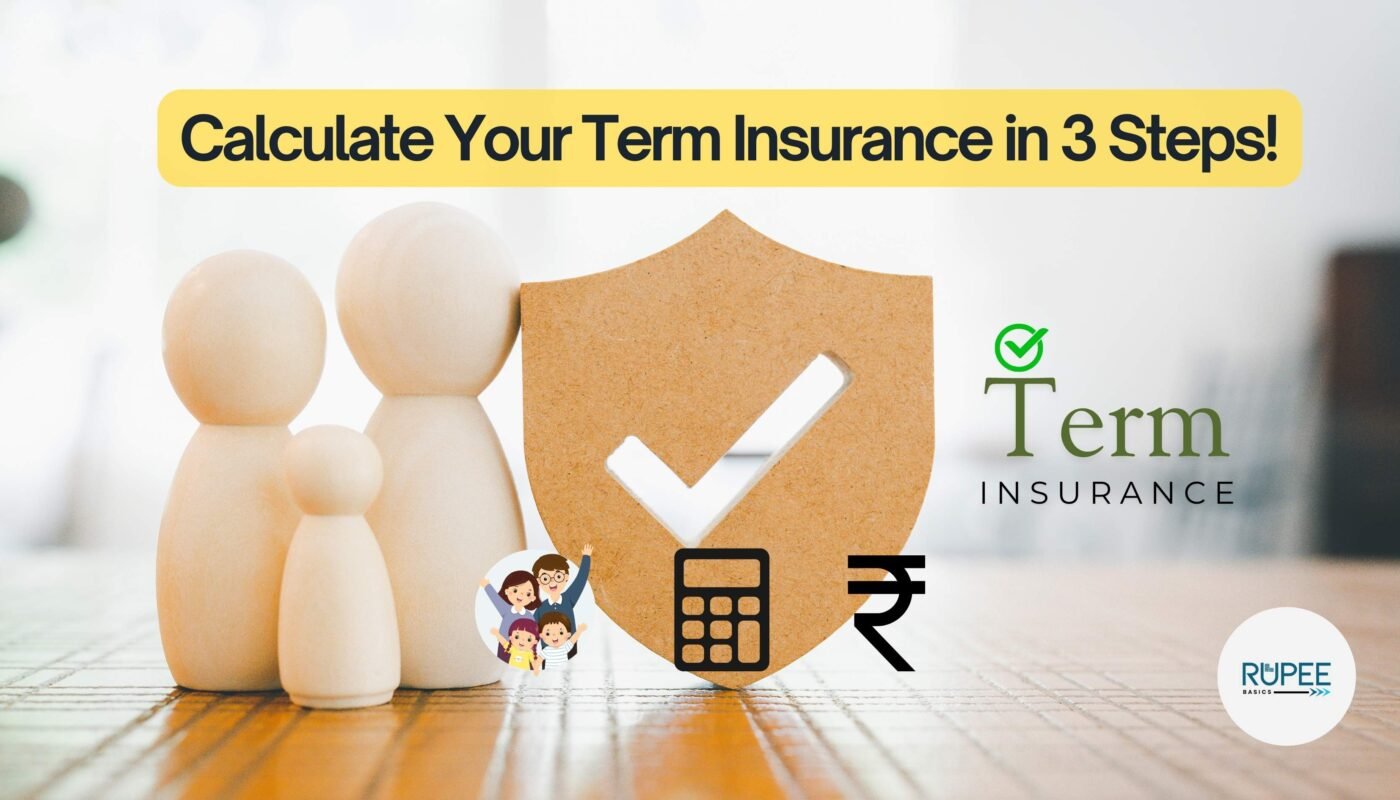How Much Term Insurance Do You Actually Need?
Term insurance is like a financial safety net for your family. But how big should this net be? Too little, and your loved ones struggle. Too much, and you pay extra premiums. Let’s simplify how to find your ideal coverage using 5 key factors.
Securing adequate term life insurance is a crucial step in safeguarding your family’s financial future. Determining the appropriate coverage amount involves assessing various personal and financial factors to ensure your loved ones are well-protected.
5 Factors That Decide Your Term Insurance Coverage
- Your Income
- Coverage should replace your income for 15-20 years.
- Example: ₹6 lakh/year income → Minimum ₹1 crore coverage.
2. Liabilities (Loans/EMIs)
- Add home loan, car loan, or credit card debt. (Account for outstanding debts such as mortgages, car loans, or credit card balances that your family would need to settle.)
- Protects family from debt burden.
3. Family Needs
- Child’s education, spouse’s retirement, medical costs.
- Estimate future expenses (adjusted for inflation).
4. Existing Savings/Investments
- Subtract existing life insurance or fixed deposits. (Evaluate your current savings, investments, and any existing life insurance policies that could offset the required coverage amount.)
5. Inflation
- Prices rise yearly – ensure coverage accounts for 5-7% inflation.
3 Simple Formulas to Calculate Coverage
A. Human Life Value MethodSum Assured = Annual Income × 10-15 (Multiply your annual income by a factor (commonly 10 to 15) to estimate coverage. For example, if you earn ₹10 lakh annually, a coverage of ₹1 crore to ₹1.5 crore may be appropriate.)
Best for: Beginners needing quick estimates.
B. Income Replacement + ExpensesSum Assured = (Annual Income × Years till Retirement) + Liabilities + Future Expenses
Best for: Detailed planning.
C. DINK Method (Dual Income, No Kids)Sum Assured = 10 × Individual Income + Liabilities
Best for: Young couples without dependents.
Example: Ravi’s Term Insurance Calculation
- Age: 30 | Income: ₹6 lakh/year
- Home Loan: ₹50 lakh | Child’s Education Fund: ₹20 lakh
- Calculation:
- Income Replacement (20 years): ₹6 lakh × 20 = ₹1.2 crore
- Add Liabilities: ₹50 lakh + ₹20 lakh = ₹70 lakh
- Total Coverage: ₹1.9 crore (rounded to ₹2 crore)
Another Example:
Consider Raj, a 35-year-old earning ₹12 lakh annually, with a ₹50 lakh home loan, ₹5 lakh in car loans, and two children whose education is estimated to cost ₹20 lakh each.
- Debts: ₹50 lakh (home loan) + ₹5 lakh (car loan) = ₹55 lakh
- Income Replacement: ₹12 lakh × 10 years = ₹1.2 crore
- Education Expenses: ₹20 lakh × 2 = ₹40 lakh
- Total Coverage Needed: ₹55 lakh + ₹1.2 crore + ₹40 lakh = ₹2.15 crore
Conclusion/Summary
Your term insurance should cover income loss, clear debts, and fund future goals. Start with 10-15x your income, add loans/expenses, and adjust for inflation. Review coverage every 3-5 years or after major life events (marriage, child’s birth).
FAQs
- What’s the minimum term insurance coverage?
At least 10x your annual income. - Does coverage need to increase with age?
Yes! Update if you take new loans, have kids, or inflation rises. - Should I include retirement in coverage?
Only if your family relies on your income post-retirement. - Can spouses have joint term insurance?
No, buy separate policies for individual protection. - Are online calculators accurate?
They give rough estimates – customize based on your needs. - How often should I reassess my insurance coverage? A. It’s advisable to review your coverage every few years or after significant life events such as marriage, the birth of a child, or major financial changes.
- Can I adjust my coverage amount after purchasing a policy? A. Some policies allow adjustments, but it’s essential to check with your insurer. Alternatively, you may consider purchasing additional coverage.
- Does term insurance cover accidental death? A. Yes, standard term insurance typically covers death due to accidents. However, specific terms may vary by policy.
Pro Tip: Use free online term insurance calculators, but double-check with the formulas above!
“If you continuously compete with others, you become bitter. If you compete with yourself, you become better.”




